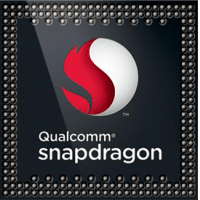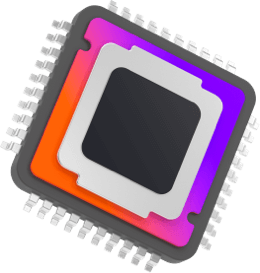| Qualcomm Snapdragon 8 Gen 1 | Intel Core i3-10100Y | |
| Max TDP | 5 W | |
| NA | Consumo di energia al giorno (kWh) | NA |
| NA | Costo di esercizio al giorno | NA |
| NA | Consumo di energia all'anno (kWh) | NA |
| NA | Costo di esercizio all'anno | NA |
Qualcomm Snapdragon 8 Gen 1 vs Intel Core i3-10100Y

Qualcomm Snapdragon 8 Gen 1 funziona con 8 core e 8 thread della CPU. Funziona su 3.00 GHz base 1.80 GHz tutti i core mentre il TDP è impostato su .Il processore è collegato al socket della CPU N/A Questa versione include 6.00 MB di cache L3 su un chip, supporta i 4 per supportare la LPDDR5-6400 e presenta PCIe Gen . Tjunction mantiene al di sotto dei -- gradi C. In particolare, Cortex-X2 / -A710 / -A510 Architecture è migliorata con la 4 nm e supporta None . Il prodotto è stato lanciato il Q1/2022

Intel Core i3-10100Y funziona con 2 core e 8 thread della CPU. Funziona su 3.90 GHz base 3.90 GHz tutti i core mentre il TDP è impostato su 5 W .Il processore è collegato al socket della CPU BGA Questa versione include 4.00 MB di cache L3 su un chip, supporta i 2 per supportare la DDR3L-1600 SO-DIMMLPDDR3-1866 e presenta PCIe Gen . Tjunction mantiene al di sotto dei 100 °C gradi C. In particolare, Comet Lake S Architecture è migliorata con la 14 nm e supporta VT-x, VT-x EPT, VT-d . Il prodotto è stato lanciato il Q1/2021
Qualcomm Snapdragon 8 Gen 1
Intel Core i3-10100Y
Confronta dettaglio
| 3.00 GHz | Frequenza | 1.30 GHz |
| 8 | Core | 2 |
| 3.00 GHz | Turbo (1 nucleo) | 3.90 GHz |
| 1.80 GHz | Turbo (tutti i core) | 3.90 GHz |
| Hyperthreading | Yes |
|
| Overclock | No |
|
| hybrid (Prime / big.LITTLE) | Architettura principale | normal |
| Qualcomm Adreno 730 | GPU | Intel UHD Graphics 615 |
| No turbo | GPU (Turbo) | 1.00 GHz |
| 4 nm | Tecnologia | 14 nm |
| No turbo | GPU (Turbo) | 1.00 GHz |
| 12.1 | Versione DirectX | |
| 0 | Max. viene visualizzato | 3 |
| LPDDR5-6400 | Memoria | DDR3L-1600 SO-DIMMLPDDR3-1866 |
| 4 | Canali di memoria | 2 |
| Memoria massima | ||
| ECC | No |
|
| 2.00 MB | L2 Cache | -- |
| 6.00 MB | L3 Cache | 4.00 MB |
| Versione PCIe | ||
| PCIe lanes | ||
| 4 nm | Tecnologia | 14 nm |
| N/A | Presa | BGA |
| TDP | 5 W | |
| None | Virtualizzazione | VT-x, VT-x EPT, VT-d |
| Q1/2022 | Data di rilascio | Q1/2021 |
Cinebench R23 (Single-Core)
Cinebench R23 è il successore di Cinebench R20 ed è basato anche su Cinema 4 Suite. Cinema 4 è un software utilizzato in tutto il mondo per creare moduli 3D. Il test single-core utilizza solo un core della CPU, la quantità di core o l'abilità di hyperthreading non conta.
Cinebench R23 (Multi-Core)
Cinebench R23 è il successore di Cinebench R20 ed è basato anche su Cinema 4 Suite. Cinema 4 è un software utilizzato in tutto il mondo per creare moduli 3D. Il test multi-core coinvolge tutti i core della CPU e offre un grande vantaggio dell'hyperthreading.
Cinebench R20 (Single-Core)
Cinebench R20 è il successore di Cinebench R15 ed è basato anche su Cinema 4 Suite. Cinema 4 è un software utilizzato in tutto il mondo per creare moduli 3D. Il test single-core utilizza solo un core della CPU, la quantità di core o l'abilità di hyperthreading non conta.
Cinebench R20 (Multi-Core)
Cinebench R20 è il successore di Cinebench R15 ed è basato anche su Cinema 4 Suite. Cinema 4 è un software utilizzato in tutto il mondo per creare moduli 3D. Il test multi-core coinvolge tutti i core della CPU e offre un grande vantaggio dell'hyperthreading.
Cinebench R15 (Single-Core)
Cinebench R15 è il successore di Cinebench 11.5 ed è basato anche su Cinema 4 Suite. Cinema 4 è un software utilizzato in tutto il mondo per creare moduli 3D. Il test single-core utilizza solo un core della CPU, la quantità di core o l'abilità di hyperthreading non conta.
Cinebench R15 (Multi-Core)
Cinebench R15 è il successore di Cinebench 11.5 ed è basato anche su Cinema 4 Suite. Cinema 4 è un software utilizzato in tutto il mondo per creare moduli 3D. Il test multi-core coinvolge tutti i core della CPU e offre un grande vantaggio dell'hyperthreading.
Geekbench 5, 64bit (Single-Core)
Geekbench 5 è un benchmark multipiattaforma che utilizza pesantemente la memoria di sistema. Una memoria veloce spingerà molto il risultato. Il test single-core utilizza solo un core della CPU, la quantità di core o l'abilità di hyperthreading non conta.
Geekbench 5, 64bit (Multi-Core)
Geekbench 5 è un benchmark multipiattaforma che utilizza pesantemente la memoria di sistema. Una memoria veloce spingerà molto il risultato. Il test multi-core coinvolge tutti i core della CPU e offre un grande vantaggio dell'hyperthreading.
iGPU - FP32 Performance (Single-precision GFLOPS)
Le prestazioni di calcolo teoriche dell'unità grafica interna del processore con semplice precisione (32 bit) in GFLOPS. GFLOPS indica il numero di miliardi di operazioni in virgola mobile che l'iGPU può eseguire al secondo.

Stima dell'utilizzo elettrico


